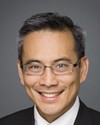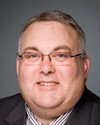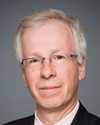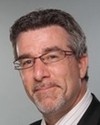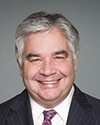I'll try not to.
At the outset, I want to make it clear that I'm not here as Minister Van Loan; I'm here as MP Van Loan. I'm technically the minister who oversees this process, so I wanted to make everybody aware that I did clear my participation in the process here with the Ethics Commissioner, and that is subject to my appearing solely as the member of Parliament for York—Simcoe, which I am doing.
I do want to say I support the commission's work generally all across the province of Ontario. I think they did a very good job on a very challenging project. They should be commended on that.
I am proposing a very minor change to the northern boundary on the Simcoe County side of the York—Simcoe riding. It might be easier for you to actually look at the map I've circulated that shows an overlay of the options here. That is to move the proposed northern boundary of the riding, which is the red line, to my suggested amendment line, the blue line. The affected area, obviously, is the hatched area in between.
The reason for this is that it would better reflect the way that communities exist and operate and how people live their lives in this area. People in the hatched area are generally oriented towards the south in their day-to-day lives. That would be their community of interest. They shop in the town of Bradford, to the south, and they've traditionally gone to school in Bradford West Gwillimbury to the south. They get their health care in that direction, and they tend to be involved in sports and community groups in that direction.
In fact, I can give you an example. At a recent meeting of the Bradford West Gwillimbury Local History Association, a good chunk of the people in attendance came from that hatched area, even though it's technically part of the town of Innisfil.
There's a reason so many from this area, which is technically in the town of Innisfil, are oriented to the south. That's because historically much of this area was not in Innisfil. In fact, it wasn't there until a series of amalgamations in 1991. This included the overwhelming majority of the population in question, including the village of Cookstown, which is at the west end of that area.
Only a municipal boundary change at that time, which was a kind of compensation for a series of amalgamations that happened at the other end with Barrie, brought part of these lands into the town of Innisfil—not all of them but part of them.
The clear sentiment of the active community leaders in that hatched area, the affected area, is that they would like to be associated with the area to the south and be part of that constituency. I should tell you there is really no partisan consequence from a change like this. You can transpose the numbers any time you want through any of the past several elections; the results come out essentially the same. It is a very minor change. This is being done on behalf of the people who live in this area, a request that I make on their behalf, because it is in their interest.
A little on the numbers. Right now, York—Simcoe, if you look at the numbers on the maps I have there, is significantly below the provincial quotient. When the commission initially came out with its first set of maps, they had taken all of Innisfil out of what they're proposing now. But they saw that the number for the new York—Simcoe was perhaps too low, so they tried to compensate by adding that—you can almost picture it on the bottom right, a square where you see Durham in the middle, that piece of land that is largely rural—and that would bring the numbers to a more reasonable level.
The local reaction in that area was quite strong: they wanted to remain in a Durham riding. It would have been odd; you would have had Simcoe County, part of old York County, and part of old Ontario County, now Durham region, all in one riding across three counties. They thought that was too much of a spread, so the commission carved that off in the second set of maps, but they didn't do anything else to correct the population, so York—Simcoe ends up down at 94,000. On the proposed changes, you can see York—Simcoe comes up to about 99,000, and Barrie—Innisfil, which would be the riding to the north, the south end of Barrie and the remainder of Innisfil, would be about 97,000.
Why did the commission choose the boundary it chose? I believe simply because it was a municipal boundary. It seemed a sensible thing to do from that perspective. We already have a number of exceptions in this riding where municipal boundaries have been ignored where it makes sense to do that. There are three polls in the south end that are part of King Township, but they are part of the Holland Marsh. With that community of interest, it makes sense to keep them all together in the riding. The same is the case for a chunk of land at the south end of East Gwillimbury, which is being carved out and put into Newmarket—Aurora because that's where they're more oriented. As I pointed out, this particular municipal boundary has a fairly recent date and doesn't really reflect the community of interest, so I don't believe it has the significance that would cause one to want to maintain that.
That's what I would put to you, and that simply on that basis you approve the request I have for you.
I might add one further comment, which is that it is supported by all the adjacent members of Parliament, including Patrick Brown, whose interest is in the Barrie—Innisfil riding in particular. He agrees that this is an appropriate boundary, based on his familiarity with the community.


